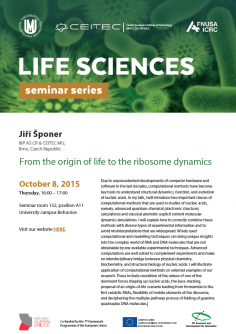Due to unprecedented developments of computer hardware and software in the last decades, computational methods have become key tools to understand structural dynamics, function, and evolution of nucleic acids. In my talk, I will introduce two important classes of computational methods that are used in studies of nucleic acids, namely, advanced quantum-chemical (electronic structure) calculations and classical atomistic explicit solvent molecular dynamics simulations. I will explain how to correctly combine thes methods with diverse types of experimental information and t avoid misinterpretations that are widespread. Wisely used computational and modelling techniques can bring unique insights into the complex world of RNA and DNA molecules that are not obtainable by any available experimental techniques. Advanced computations are well suited to complement experiments and make an interdisciplinary bridge between physical chemistry, biochemistry, and structural biology of nucleic acids. I will illustrate application of computational methods on selected examples of our research. These include revelation of the nature of one of the dominant forces shaping up nucleic acids, the base stacking,proposal of an origin-of-life scenario leading from formamide to the first catalytic RNAs, flexibility of mobile elements of the ribosome, and deciphering the multiple-pathway process of folding of guanine quadruplex DNA molecules.
Change institution
- About Institution
- Research
-
Core Facilities
- CEITEC Nano Research Infrastructure
- Biomolecular Interactions and Crystallization
- X-ray Diffraction and Bio-SAXS Core Facility
- Nanobiotechnology Core Facility
- Josef Dadok National NMR Centre
- Cryo-electron Microscopy and Tomography
- Proteomics Core Facility
- Plant Sciences Core Facility
- Cellular Imaging Core Facility
- Genomics Core Facility
- Multimodal and Functional Imaging Laboratory
- PhD School
- News/Events
- Contacts








